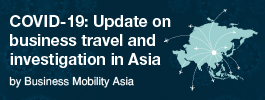Sustainable investments become mainstream for Asia Pacific HNWIs

Sustainable investments are increasingly seen by High Net Worth Individuals (HNWI) as delivering viable returns, according to the latest report by Lombard Odier
- HNWIs are more certain that sustainable assets will deliver superior returns, and are investing more in them.
- Differences in investment attitude between generations can hinder the shift.
- HNWIs are increasing diversification between traditional and alternative assets with older HNWIs putting more into alternatives than younger investors.
Sustainable investments have become top of mind concerns of high net-worth individuals (HNWIs) in Asia Pacific, together with market volatility and investment returns; leading families are reshaping investment decisions, and reimagining sustainability, explained Lombard Odier’s head of Asia, Vincent Magnenat.
Lombard Odier’s 2022 APAC HNWIs study found that investors are now more certain that sustainability will deliver superior returns. They see sustainable investments as an opportunity, and evaluate them on a risk-adjusted return basis. A full 78% of HNWIs say they are interested in sustainable investments.

These individuals have a conviction about sustainable investment, and the willingness to act on that belief, said head of UHNWI offering for Asia, Jean-François Aboulker, “We see the trend continuing. We see a shift in sustainable investing, to an asset group that can deliver superior returns.” HNWIs also believe sustainable investments will enable them to transition towards a better future, Aboulker said, and the trend is towards evaluating assets based on the risk-return opportunity.
Several factors drive those sustainable investments. One, Aboulker said, is the ability to get a superior return. Another is the opportunity to mitigate risk, which has become increasingly important. In addition, they want to contribute to making the world a better place, to mitigating the carbon issue, and to feeling good about their choices. They don’t have to compromise on returns, Magnenat added.

Despite the proclivity towards sustainability, Magnenat said a gap between interest and actions is reflected in the investments that families actually make. While the percentage of assets in sustainable investments has increased, 455 of HNWIs hold less than 20% of their portfolio in sustainable investments, and 17% do not hold any.
A key reason the percentages are lower than one might expect is, investing in sustainability remains a challenge across generations. Family members who want to make sustainable investments sometimes face barriers in convincing other family members, often older, to do so. While the “next generation” is more interested in – and is more convinced about – sustainability, they face barriers when they interact with older family members on the topic. Families who often lack interest in or knowledge of sustainable investments, believe they underperform other assets and do not have proven track records.

Another reason is concern over the shorter-term performance of sustainable investments. All these despite the overall weakness in market conditions and performance that sustainable assets face.
These gaps represent an opportunity for private bankers to engage with families, to reconcile the differing views and to forge a way forward. In fact, some HNWIs think sustainability can be a bridge between the generations.
Part of that conversation between HNWIs and bankers is risk diversification offered by sustainable assets, which Magnenat said will be to their detriment if left undiscussed. Rather than increasing risk, sustainable investments may add value to their portfolio by diversifying risks away from non-sustainable assets. Moreover, consumers are switching their purchase patterns and returns from companies that do not develop sustainability programmes or investments are declining.
Sustainable investments are key to risk management, Aboulker said, “We believe they are the investment opportunity of tomorrow.” Risk assessment is key, Magnenat added, and banks’ abilities to explain a company’s sustainable path in a forward-looking manner will be critical.
Investment risk and return
The study also showed that market volatility is the greatest concern when it comes to investment portfolios and 68% of HNWIs in Asia Pacific have adjusted their portfolios. The second-biggest concern is fear of missing out, and third is low investment returns, most likely exacerbated by rising inflation.

Forty-four percent of HNWIs have started to diversify from traditional asset classes such as equities and bonds into “safer” assets, and 27% invested in their own company. Volatility, portfolio risk, market risk and portfolio management are key areas they want to address, said Aboulker.
For traditional investments, Aboulker said HNWIs have increased diversification into safer assets, such as gold and cash, as well as to increase the weight on private assets. When HNWIs do invest in public markets, they select value stocks; they also tend to be underweight on private bonds.
In alternative-asset classes, instead of real estate which has been favoured for decades, Magnenat said, HNWIs are now looking more at private equity, debt and infrastructure. They have also stayed away from crypto and digital assets. “New resources such as cryptocurrency and digital assets are decreasing; risk management is key. The ability to manage digital assets and crypto is harder.”
Generational differences in investing are not what some might expect. Magnenat said, “By intuition, you think, I’m old, not investing in private assets. Private assets are over 10 to 12 years. Usually, it’s long term.” Contrary to that belief, the older generation invests more in alternative assets. The reason the younger generation invests less in them, Magnenat explained, is they have greater need for liquidity, and do not want their assets tied up for a long time.












Leave your Comments